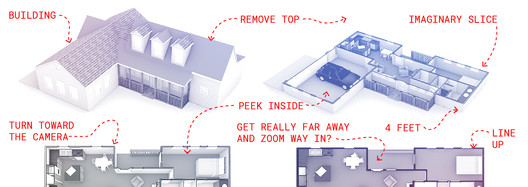The Fundamentals of Projecting Plans
Architectural plans require training in order to read, understand, and produce. Mastering their codes can unlock the most powerful tool that architects have to imagine and construct new buildings. It is not only important to learn the intricate formal and geometric operations to produce these types of drawings, but also to interrogate the traces they leave on the buildings we design. In this video, architecture professor and designer, Stewart Hicks talks about the basics of architectural plans: where they came from, how they are made and used, and what they are good at representing. Using a three-dimensional model of a basic house, he goes through the steps of transforming it into a plan projection while discussing the implications of each step and offering precedents to reveal their nuanced implications.

Architectural plans require training in order to read, understand, and produce. Mastering their codes can unlock the most powerful tool that architects have to imagine and construct new buildings. It is not only important to learn the intricate formal and geometric operations to produce these types of drawings, but also to interrogate the traces they leave on the buildings we design. In this video, architecture professor and designer, Stewart Hicks talks about the basics of architectural plans: where they came from, how they are made and used, and what they are good at representing. Using a three-dimensional model of a basic house, he goes through the steps of transforming it into a plan projection while discussing the implications of each step and offering precedents to reveal their nuanced implications.
